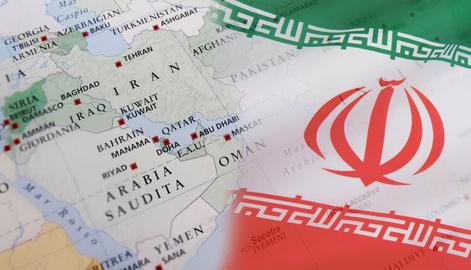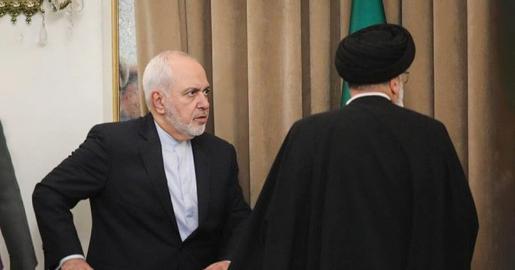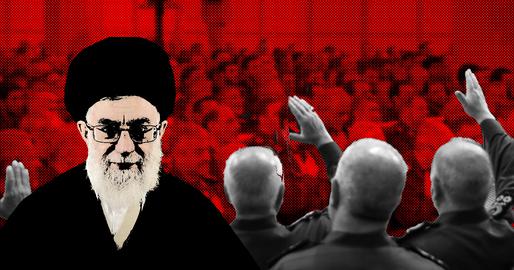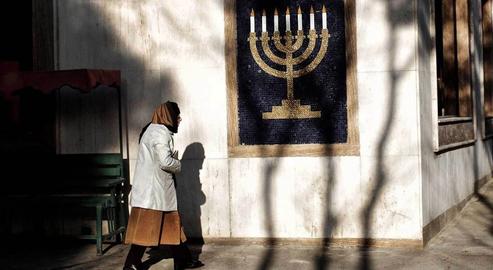In 1979, the Islamic Revolution overthrew the regime of Shah Mohammad Reza Pahlavi after seven decades of constitutional monarchy in Iran. The Shiite clergy, led by Ruhollah Khomeini, who had returned to Tehran victorious from his exile in France as a victorious leader, seized power with the support of the paramilitary Islamic Revolutionary Guard Corps.
Initially, many Iranians saw a glimmer of hope in the anti-Shah, anti-West, conservative model promoted by Khomeini. But others already feared Khomeini would lead the country to isolation and confrontations with global and regional powers: predictions that, if anything, turned out to be understatements.
The “New Iran” as Birthright
As a result of the Islamic Revolution, Iran underwent a radical transformation, both internally and externally. Hany Soliman, an expert on Iranian affairs and director of the Arab Center for Research and Studies, told IranWire the country had essentially gone from from “a monarchy with civil considerations to a theocratic state mainly controlled by fanatic enthusiasts, who formed the core of all institutions in the new regime, which sought to export the revolution.” What had happened in Iran, Soliman added, was regarded by the clerical caste as “an inspiring model that had to be exported”.
As such, the Khomeini regime sought to establish Tehran as the most prominent power in the Middle East and leading light of the Islamic world, partly by promoting the myth of Persian “superiority” over Arabs. Exporting the revolution, so Khomeini claimed, did not mean “interfering in the affairs of other countries” but “answering their questions regarding God”. But in reality, Tehran worked to penetrate and shape decision-making in these countries through direct or indirect intervention. This can be observed today in Iraq, Lebanon, Syria, Yemen and other countries.
Political analyst Ibrahim al-Hatlani says the Iranian regime relied on a set of “legacies” to realize its ambitions, the most important of which was “the right of the People of the House of the Prophet (Ahl al-Bayt) to power and rule”. This was referred to by Khomeini in a now-famous letter, entitled The Political and Divine Will, penned in 1983. Khomeini opened the missie with the Hadith al-Thaqalayn (the Hadith of the Two Treasures), which is widely cited by both Sunni and Shia sources: “I [Muhammad] left among you two treasures which, if you cling to them, you shall not be led into error after me. One of them is greater than the other: The book of God [Quran], which is a rope stretched from Heaven to Earth, and my progeny, my Ahl al-Bayt. These two shall not be parted until they return to the Pool of Abundance in Paradise.”
Al-Hatlani told IranWire: “Khomeini said of this hadith that there was a political trust that was broken by Sunnis. Shiites believe that in the hadith Prophet Muhammad stressed the infallibility of Ahl al-Bayt and their right to power. Sunnis, however, do not see in it a valid and explicit indication of the infallibility of Ahl al-Bayt.”
He added: “Khomeini, who claimed to belong to the Ahl al-Bayt, therefore felt responsible for restoring the ‘stolen’ political right, and establishing an Islamic state led by a representative of the Mahdi [the last Imam in Shia mythology]”.
Elsewhere, in his book The Islamic Government, Khomeini stated a firm believe that the concept of monarchy went against the principle of Islamic rule, and that there could be no hereditary monarchy in Islam. “There is no way for us,” he wrote, “but to work to destroy the corrupt and corrupting regimes.”
Exporting the Revolution: A Cornerstone of Tehran’s Foreign Policy
Tehran, Al-Hatlani told IranWire, relies on two strategies to expand and strengthen its influence in the world in general, and the Middle East specifically. “The first one is sectarian: by supporting Shiite minorities in the region and working to increase their number, with the aim of strengthening loyalty to the political system in Tehran.
“The second is ‘exporting the revolution’. This was first carried out by the ‘Liberation Movements Unit’ formed in 1979, which worked towards establishing armed Shiite organizations and parties like the Islamic Supreme Council of Iraq in 1982, the Badr Corps in 1983, and Hezbollah in Lebanon in 1984. After that, the Quds Force took over the task of funding these groups to make political gains for Tehran. Tehran’s interests in the Middle East might require support for some armed Sunni organizations, such as the Islamic Jihad Movement and Hamas in Palestine, and terrorist organizations such as Al-Qaeda.
“Subsequently, ‘exporting the revolution’ has become an essential foreign policy that governs Iran’s relations with neighboring countries. The Islamic Revolution brought about a unique sense of identity for the new regime; it felt Iran was a strong country with a model to export to exert influence and achieve political gains. This, however, has brought Iran into a state of hostility with other projects in other countries, resulting in continuous conflict in the region.
“This has led to Iran becoming a ‘pariah state’, exerting pressure on other countries and constantly threatening to wage a war against Israel or America. The revolution has therefore produced a confrontational regime instead of a traditional state with its own, balanced foreign policies”.
Terrorism
Hisham Muhammad is a resident of the city of Inkhil, north of Daraa, in southern Syria. He asked IranWire not to reveal his identity for the safety of his family members. “We were, perhaps, the first to suffer the terrorism of Iran-backed militias following the outbreak of the Syrian uprising,” he says.
On June 21, 2012, Syrian government forces, accompanied by members of Lebanese Hezbollah and others – believed to be from the then newly-formed Abu al-Fadl al-Abbas militia – raided a residential neighborhood in the center of Inkhil, murdering 18 residents.
"They slaughtered four members of one family with knives, for no reason, following an attack by the Free Syrian Army on a military checkpoint in our neighborhood," Hisham said. “These militias raised a black flag on the minaret of one of the city’s mosques, which bore the inscription: ‘Revenge for Al-Hussein’. It caused a state of panic in the city, and a mass exodus of the people.”
This incident was one of many involving Iran-backed proxies in the region. In June 2013 in Lebanon, a young man named Hashem al-Salman was killed by gunmen affiliated with Lebanese Hezbollah trying to disperse a protest in front of the Iranian embassy in Beirut. The demonstration was against Hezbollah and Iran’s interventions in Syria.
Rola al-Salman, Hashem's sister, told IranWire that her brother had obtained a permit for the protest from the Lebanese Ministry of Interior. He had wanted to utter a few words into the microphone against Iran's incursions into Lebanon via Hezbollah. The man responsible for his killing, she said, was known locally as Hajj Haidar, an official in Hezbollah’s Unit 1000 brigade. “He instructed his team to suppress, beat, arrest and kill the protestors and passed on the order to kill Hashem. I am certain that the decision to assassinate my brother was taken in advance, and the embassy protest was seen as an opportunity to carry it out. The order came from high-ranking Hezbollah official, Wafiq Safa”.
Al-Salman added: "Not one single official, investigator, or security agent in the country dared to go to the crime scene. A Lebanese citizen was killed in front of a foreign embassy [Iran’s embassy in Beirut], but not a single person was held responsible.”
Violence as a Matter of Policy
Ibrahim al-Hatlani argues that these two incidents and dozens more like them show the Iranian regime’s relationship with violence and terrorism has been “one of principle, not temporary” since the very beginning. From the latter half of 1979, he told IranWire, “the romantic feelings that dominated Tehran quickly disappeared and were replaced by notions of hatred and revenge.”
From late 1979, the fledgling regime in Tehran initiated a campaign of arrests and executions of officers, soldiers, and political and economic figures. Some of these were carried out directly, or through trials headed by Ayatollah Sadeq Khalkhali, who was appointed by Khomeini upon his return from exile as head of the Revolutionary Court. Most of those killed were figures associated – rightly or wrongly – with the monarchy. Later in the 1980s, these internal executions were accompanied by external assassinations.
As well as people, Iranian state-sponsored terror has targeted the interests of countries opposed to its policies. Official agencies were involved in such plots as an attempt to smuggle explosives to Mecca in 1986, which saw Iranian pilgrims recruited by the Intelligence Ministry, according to a later statement by Ahmad Khomeini in September 2003.
It has also been indirect, through Iran-backed Shiite organizations such as Lebanese Hezbollah, which carried out a suicide attack on the French embassy in Beirut in 1982 in retaliation for France selling weapons to Iraq during the Iran-Iraq war. Iraqi militias such as the Dawa Party also carried out bombings in Kuwait in 1983, targeting Kuwaiti and foreign facilities.
Hany Soliman sums up: “Obstructing political stability in Lebanon through Hezbollah, the systematic killing of Sunnis by Iranian militias in Iraq, the presence of the Houthis in Yemen and the killings and torture practiced there, as well as the Iranian presence in Syria, and the demographic change it is causing, are examples of Iranian-sponsored external terrorism.
"Others are the funding of multiple militias in the region and providing them with weapons such as drones and ballistic missiles, as well as posing a threat to navigation in the Persian Gulf.” Naturally, he added, “the most significant aspect is the Iranian nuclear program and how it is being used to threaten countries in the region, and to exert pressure on the international community.
“Through this terrorism, Iran aims to control other Arab countries, to use their resources to support militias that implement the Iranian agenda, and to provide alternative resources to the regime following the many sanctions imposed on it.”
Double Use of Drugs
Iran’s border with Afghanistan runs for more than 900 km. It has allowed Tehran to play the role of a mediator between Afghanistan, the world’s biggest opium producer, and consumers in the Middle East, the Gulf and Europe. Iran is a way-station for nearly 80 percent of Afghan-produced opium, which came to 9,000 tons in 2017.
“Iran's relationship with the drug trade, especially opium, goes back centuries,” Al-Hatlani told IranWire. “Up until the 1970s Iran allowed poppy cultivation, under government supervision. A few years after Khomeini seized power, the cultivation of poppies in Iran was banned on the grounds that drugs had become one of the weapons of colonialism.”
But despite the domestic ban, Tehran did little to stem the tide of opioids passing through the country from Afghanistan. “International sanctions on Iran, which were imposed immediately after the new regime took over in 1979, weakened the economy,” Al-Hatlani said. “Therefore, the regime and its military and security institutions tried to circumvent the sanctions by resorting to acts such as money laundering, the arms trade, and drug trafficking, to fund security and military projects at home and abroad.”
In January 2016, Wikileaks published a secret telegram issued by the US Embassy in the Azerbaijani capital of Baku in 2009. In it, US diplomats confirmed: “Iran is considered one of the largest drug smugglers in the world, as it is the largest buyer of Afghan opium, and one of the largest heroin producers in the world. Around 95 percent of heroin exported to the European market comes from Iran via Azerbaijan. The Iranian regime used this drug trade for two purposes; to bring Tehran cash and to destroy the youth in other countries, given that young people are the real wealth of any country.” Soliman holds that the expansion of Iran-backed militias in the Middle East, and increased overheads, has since prompted Tehran to intensify its activities in the drug trade.
Al-Hatlani notes that in addition to its financial revenues, the illegal drug trade sometimes allows Tehran to “manage foreign relations by blackmailing governments and international organizations”: in 2019, the head of the Iranian Anti Narcotic Police threatened to drown European countries with drugs if they did not pay their share of the costs of combating drug smuggling to Europe through Iran.
In April 2021, Iranian Foreign Ministry spokesman Saeed Khatibzadeh announced that Tehran had suspended dialogue and cooperation with Brussels on matters related to terrorism, drugs, refugees, and human rights, due to the EU’s sanctions on Iranian officials including Hossein Salami, commander-in-chief of the IRGC, and Gholamreza Soleimani, commander of the Basij. After the US withdrew from the JCPOA, Iranian officials including President Hassan Rouhani had threatened to allow the smuggling of drugs from Iran to Europe.
Related coverage:
Killers of Iraqi Reporters and Activists Sentenced to Death in Basra
Iran's Campaign of Terror in Iraqi Kurdistan
Protesters Descend on Iranian Consulate After Murder of Iraqi Activist
An Interactive Map of Iran's Presence in Syria
Investigation: How Tehran Supported Bashar al-Assad's Presidential Campaign in Syria
Holy Terror: Iran's Criminal Record from Germany to Ethiopia
visit the accountability section
In this section of Iran Wire, you can contact the officials and launch your campaign for various problems

























comments